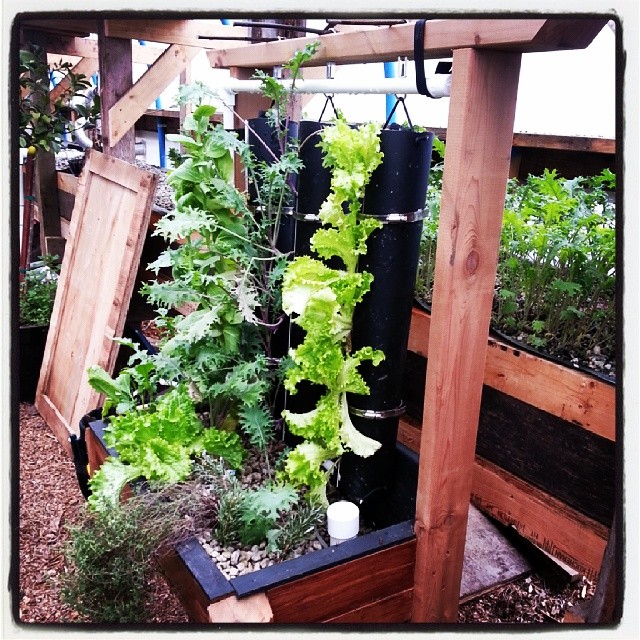Hey! By the way… TheEdibleTerrace is reader-supported. When you buy through links on our site, we may earn an affiliate commission and as an Amazon affiliate, we earn from qualifying purchases. Thanks in advance for your support!

For those who are limited in space to garden with, consider your home through a new lens. With a little creativity, you can very easily build a vertical vegetable garden for yourself.
Vertical gardens can make the most of a small space and give you the fresh fruit and veggies you crave without having to spend a lot of money, and best of all, you know where your food comes from!
It’s a win-win for you, but how do you go up? Learn more here on how to make a vertical vegetable garden for yourself right here.
[toc]
Building a Vertical Vegetable Garden

Source: https://flic.kr/p/kHGFbm
Research your plants
Each plant has its own requirements in regards to sunlight and water. They all grow to different heights; some spread out as ground cover, and others grow in vines. All this has to be taken into consideration when putting your garden together. Tomatoes can grow inverted, or in pots. Peas and cucumbers can grow on mesh and poles. Knowing all this can make it easier to put your vertical garden together.
There are some herbs you can grow inside. This will give you even more room for your outside garden. The space you choose needs to have enough space to accommodate the plants you choose to grow.
Here are some things you can use
Handmade 24″ Rustic Planters Box
Make boxes that fit on shelves
Simple wooden boxes that are at least six inches deep can be placed on shelves for growing things like squash, onions, potatoes, strawberries, and other plants.
If you make them 12-16 inches deep, you can grow peppers, tomatoes, and other taller plants.
Use mesh to make the most of your space
Mesh can be the best thing to maximize your vertical gardening space. Cucumbers, peas, and beans grow wonderfully on mesh. They are all vine plants, and growing them up will minimize any problems with vegetables which may occur by letting them grown on the ground (such as rotting or being eaten by animals). You can start these in pots next to your vertical garden and let them grow up the mesh.
Consider Companion Planting
![]()
Companion gardening in your vertical garden is best to help prevent diseases and overwatering. Some plants help one another grow and thrive.
It just takes a little research to find out which plants partner together.
Edible Ideas
Plants that grow well together
Beans and potatoes help one another grow. Carrots, peas, and lettuce feed one another. Celery thrives with tomatoes. Cucumbers love peas. Onions and tomatoes work well together. Strawberries love sage, rosemary, and mint.
Be wary of bad companions
There are vegetables that cross-pollinate. If you put jalapeños with bell pepper, you will get spicy bell peppers. It is best to separate some vegetables so they taste the way you expect. Usually, plants of the same family will cross-pollinate.
Additional combos to avoid
- Green beans with shallots or onions
- Carrots with Dill
- Cucumbers and potatoes
- Lettuce and parsley
- Peas and onions
- Strawberries and cabbage
Fertilizer and soil
Potting soil can be your best friend when growing a vertical garden. Some potting soil can help regulate the water you add to the soil for the plants. You can also further help drainage by adding a layer of river stones before you add the soil.
Fertilizer can be simple. You can either buy plant food from the store, or you can compost. There are small compost bins you can buy in stores and place in your apartment or condo. Composting will not only help the plants thrive, it can also reduce your organic waste.
Gardening for stress
Believe it or not, setting up and tending a garden, even a vertical one, can help you relieve stress at the end of the work day. It’s just you and the food you are growing, and nothing is more rewarding than coming home and being able eat something you grew.
Conclusion
With a little of space, imagination, and time, you too can learn how to build a vertical vegetable garden that can add to your living space, give you an outlet for your stress, and give you years of fresh and healthy produce. The best part of creating a DIY vertical vegetable garden is always having your favorite produce at your fingers for when you need it. Happy gardening!


